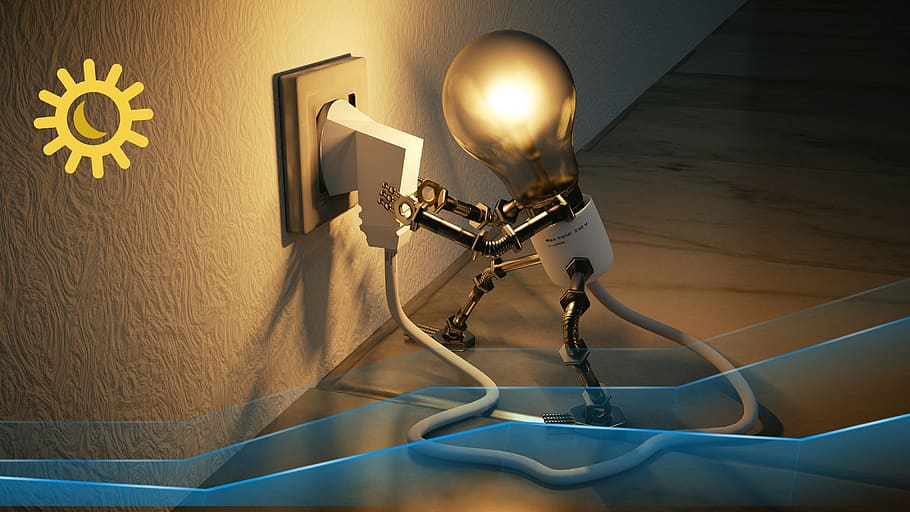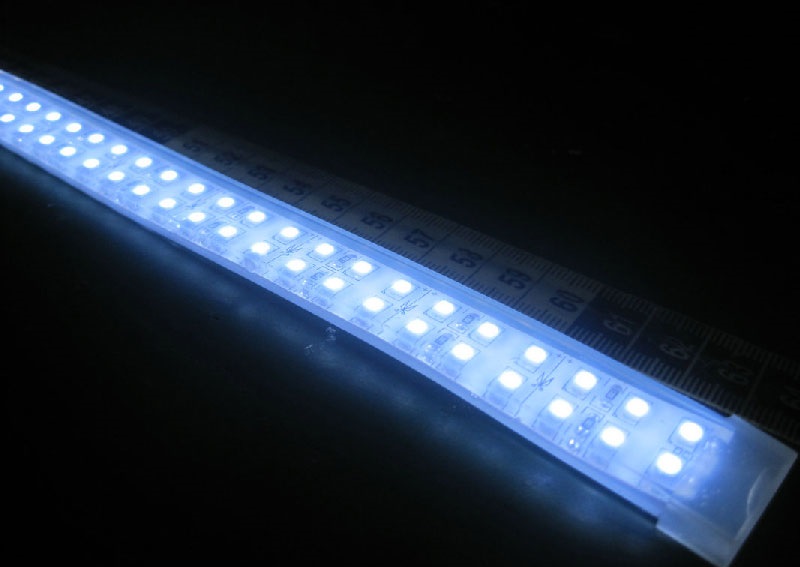
How are LED strip lights, and how do you use them?
LED strip lights are a foldable electronic circuit strip with LEDs embedded in it. LED strip lights not only give all of the advantages of LED lighting discussed previously, and they also have a number of advantages of their own.
LED strip lighting comes in a multitude of colours and can be trimmed to any length. It comes in a convenient strip that can be modified to meet a diverse host of applications.
To use 12 volt LED strip lights, just determine the size you want, cut the strip down to the size, peel off the rear adhesive, and set them in position – it’s really that simple.
LED strip lights are a green way to enhance the atmosphere and build a tone in any room.LED lights are changing the lighting industry right now. They provide a wide range of advantages over both conventional and fluorescent light bulbs, resulting in massive sales from both the national and corporate sectors. The only drawback with LED lights is that they come in a variety of sizes and forms. We’ll examine LED light strips in this post, including what they are, their benefits and drawbacks, and the effective approach to utilise them.
LED Strip Lights offer numerous advantages over more traditional lighting options such as halogen, conventional, and fluorescent. Certain benefits related to ultra long RGB LED tape lights technologies in terms, such as a durable longevity, whereas others are exclusive to LED Strips, such as adaptability. This instructive post will highlight a few of the pros and cons of LED Strip Lights.
Pros of LED Strip Lights
01. Electricity use can be Reduced :

LED Strip Lights, like other LED technologies, consume less power to operate. LEDs consume around 7.2 watts of power per metre strip, and are around 90% more effective than other types of light. That makes them highly cost-effective to run and allows users to explore with far larger installations without worrying about racking up large power bills.
02. Variety in Colour of LED Strip Light:

LEDs can reproduce a far wider range of colours than LED lamps, making them ideal for dramatic lighting applications. By addition to the standard warm and cool whites, a wide range of traditional colours may be produced.
LED light strips may well be supplied by a small battery, allowing them to be placed almost anywhere.
03. Savings:
LEDs often cut overall lighting expenses by a substantial amount due to the low amount of energy they consume and their extended lifespan.
04. Adjustable:
Luminaires are generally housed in rigid and fragile glass casings. Strip lights, on the other hand, have LEDs placed on an elastic circuit board “ribbon” that can be stretched around 90 degree angles and tailored to fit objects using a changing slope.
05. Cutting:
LED Strip Lights are among the very few varieties of light which can be cut. They have cutting hooks all throughout their length, which is commonly used to shorten or separate individual strips. Simple connection may be accomplished with non-solder connectors, or you can ask your store to perform it for yourself.
06. Existence:
LEDs are usually extremely durable and have a long life span as quad core visible light. Although incandescent lights have a 1000-hour anticipated life (until failure), LEDs have been claimed to have a life of up to 100,000 hours — and over 11 years.
Cons or Disadvantages of LED Strip Lights
LED strips offer a lengthy list of beneficial features, but they also have a number of drawbacks. These are among them:
01. Substitution:
It might be challenging to replace LEDs in a light strip. Depending on the kind of strip, it may be necessary to replace the entire set rather than just one fluorescent lamp.
02. Unattractive:
Although LED light strips are appealing to the eye, a few lights usually fail before the rest. The light screen may appear spotty at certain times.
03. Dim Lighting:

Because LEDs are made of a solid material, they can consume a large portion of the light produced. When contrasted to other light bulbs, this results in lower light conditions.
04. Alternating Voltage:
LED burnout might occur if the generating action falls below a certain level, even if just for a brief moment. The light would no longer need to be refilled and updated. Rather, it would continue to work.
05. The Best Deal:
LED lights reduce money in the long run, but the initial investment may be prohibitive.
06. Returns are Dwindling:
LEDs can become unreliable with time, and they can provide varying degrees of illumination.
07. Sticky Tape:

An adhesive paste is used to adhere several LED light strips to surfaces. It may also be neglected over time, and when removed, it may leave scars.
Gap in Understanding
In principle, there is a gap in understanding between the illumination industry and LED manufacturers. The first group does not provide direct guidance and does not include it in their product design duties in the same way that rival light sources do. The latter are unaware of important issues such as heat control or the fact that white LED performance is quite uneven, and they don’t understand a great deal about LEDs.
You may also like to read following articles:
8 Types of Lighting for Your Home Interiors!
A Simple Guide to Impeccably Lighting Your Home
Image Courtesy: Image 5